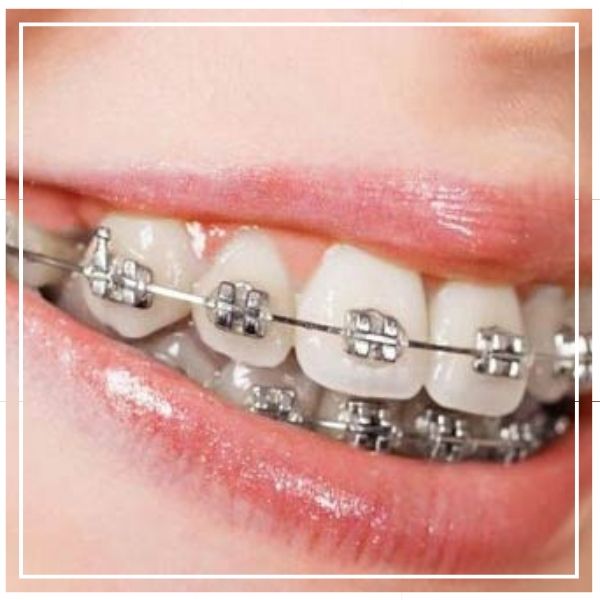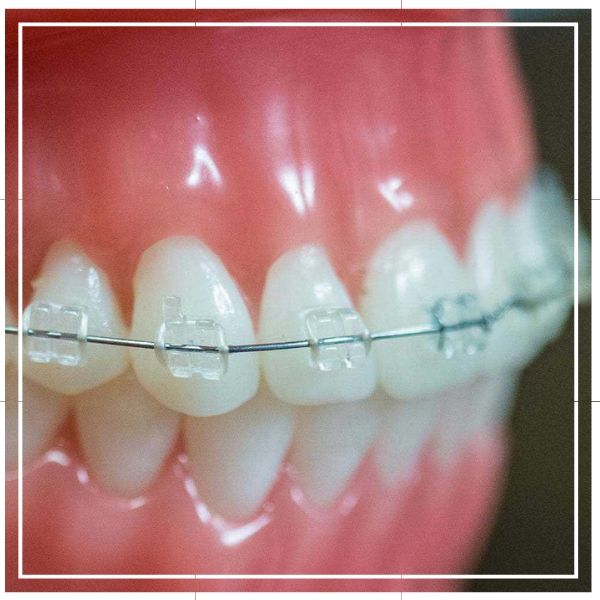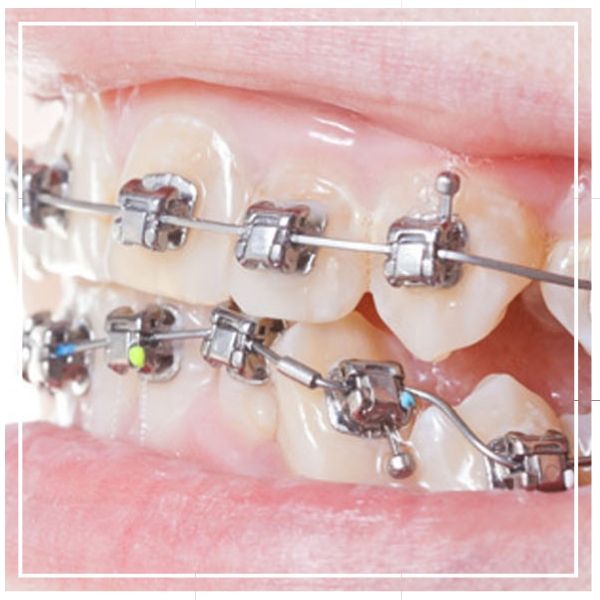
How do the Dental Braces generally work?
- Once on the teeth, the braces apply constant pressure slowly and steadily over a period of time.
- This constant pressure moves the teeth slowly in the desired position.
- The desired movement can either be to close the space in case of excess spacing between the teeth.
- The movement can also be targeted to ease out and make room for teeth to emerge in the desired position for children with crowded teeth.
- The movement of teeth is immediately followed by the change in the bone shape that holds the teeth making the changes permanent.
- In case of excessive crowding removal of teeth (premolars) is an option to gain space and then the braces are fixed to move the teeth to the desired position.
What is Early Intervention?
Kids who are suspected that crowding or spacing can become a possibility due to the way the teeth are growing can get early braces. This is possible in the age between 7 and 12. This is the time period when the kids will have all their primary teeth starting to fall and the adult teeth are developing. Their jawbones are softer, can adjust fairly faster to any changes and can grow in ideal shape.
How long to wear Dental Braces?
The time period to wear braces generally extends to 12 months to 36 months. The time period to wear braces depends on the following factors.
- The severity of the problem. The more severe the crowding or spacing, the more months one has to wear.
- Health of teeth, gums and the supporting bone.
- How diligently the instructions are being followed.
- How diligently the braces are worn and maintained
Care After Wearing Dental Braces
- The braces have to be cleaned regularly. The dentists would provide you with details on how to clean and maintain them.
- Good oral care is important after wearing a dental brace. Specialized (orthodontic) toothbrushes are available to clean the braces.
- Some foods that are particularly sticky like fudge, chocolate have to be avoided while wearing the braces as they can pose a nightmare cleaning.
- Invisalign is by far the best option as they are removable and their maintenance is comparatively easier.
- Fluoride mouthwashes are provided which has to be used continuously as part of oral hygiene.
What happens after getting your Dental Braces?
- Once the desired teeth line is achieved using the dental braces, it does not end there. They call for maintenance.
- Dental Retainers are to be worn after the brace wearing period gets over.
- Depending on the correction, the dentist would prescribe either a permanent fixed retainer at the back of the teeth (which is not visible) or a removable retainer which can be worn during the night.
- Dentists recommend wearing retainers for years if not permanently to hold the teeth to the current position and not allow them to drift away.
FAQ’s on General Orthodontics and Dental Braces
Here are some general questions we often tend to ask on Orthodontics and dental braces.
Are Braces only for Kids or Children?
Not essentially. Braces can be worn by adults too.
- Teeth position can shift and change at any age. So wearing braces at any age is fine.
- With the advent of versatile ceramic braces and Invisalign, more aesthetic options are considered by adults.
Does wearing a dental brace irritate the cheeks?
- Initially, there will be discomfort. This should slowly subside as you get accustomed.
- A relief wax will be provided by the dentist which can be applied to the metal brace.
- The wound because of any cut would heal with the application of a gel. Your dentist would provide you with the gel.
Will Braces affect your speech?
Most braces do not affect your speech. But certain types of braces like Invisalign can start to give you a slight lisp which quickly resolves within a week or so as you get used to it. Speech problems arise with certain braces because your mouth is yet to adjust to the braces. However, this is not a major issue and will not affect the majority of the people.
Can you have braces if you already have a crown?
In most scenarios, orthodontic treatment is possible with the presence of a crown. However, the dentist will conduct an initial examination to fully understand the complexity of the problem and then suggest the feasibility. The findings and suggestion of the dentist is definitely paramount.
FAQ’s on Adult Orthodontics
Most of us think that orthodontic treatment is only for children and not for adults. But the truth is dental braces can be worn by adults too and some bite-related issues can be corrected irrespective of age. Here are some of the commonly asked questions and the answers to them.
Are there any age restrictions for getting orthodontic treatment?
Orthodontic treatment is done to correct teeth, jaw position and other related problems. Usually, children can start receiving orthodontic treatment by the age of 7 after their permanent teeth have erupted. However, there are some exceptions as to when orthodontic treatment can be started. But there is no upper limit to receive orthodontic treatment. Even when you are a senior, you can receive orthodontic treatment.
How long does adult orthodontic treatment take?
The duration of treatment depends upon the severity and complexity of the treatment. Cosmetic orthodontic changes can be done within a short period of 6-8 months. Minor problems may require only about a few months to treat, while complex problems can take up to 2 years to treat. On average it takes about 12-18 months to treat some of the most common orthodontic adult problems.
The Different Types of Dental Braces
There are different primary types of dental braces though the variants are many in number. They are Traditional Metal Braces, Ceramic Braces, Self-ligating braces, Lingual Braces, and Invisalign.

Traditional Metal Braces
Remember those metallic brackets on every tooth and the wires that connect them – That is the traditional metal brace. The heavier ones were from the yesteryears. The modern metal braces are lighter and less noticeable. The wires that connect the brackets are more versatile and hence the better look.

Ceramic Braces
They are almost similar in size and shape like a traditional metal brace. The only difference is the brackets are made of ceramic and are colored like a tooth. This coloration makes them almost invisible. Tooth-colored wires are also available to make the presence of braces almost invisible.

Self-ligating Braces
They are either a metal or ceramic brace which are softer on the bone. The treatment time is much faster than the other two because the technology behind is different. The brackets are smaller in size and do not have strings and bands like the traditional metal braces.

Lingual Braces
The brackets and wires are placed on the inside of the teeth so as to make the presence of brace totally invisible.

Invisible Braces
nvisible brace is a term used to describe a range of well-concealed hidden braces. The range of invisible braces includes clear fixed braces (ceramic braces), clear aligners, and lingual braces. All of these braces are not completely invisible, but however, are very discreet and can be noticed only on close inspection.

Invisalign
- They are completely invisible and are removable.
- Though they are removable, they have to be worn for a minimum of 22 hours a day.
- Can be removed while eating and brushing the teeth.
- Depending on the complexity, the individual will receive a certain set of custom-made Invisaligns depending on the treatment plan.
- The patient has to wear each as per the time prescribed by the dentist (for few weeks).
